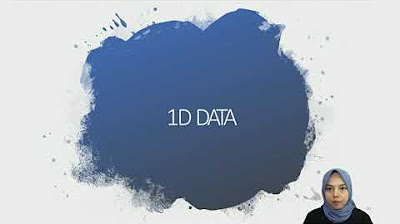Top Data Visualizations Explained | Know When to Use Each!
Summary
TLDRThis video explains the top 10 data visualizations, ranging from simple to more complex types, and discusses when to use each one. It covers essential visualizations like bar charts, line charts, scatter charts, radar charts, and heat maps, progressing to intricate options such as tree maps, hierarchy charts, sunburst charts, and Sankey diagrams. The video also touches on network charts and wraps up with a knowledge check quiz. Each visualization is illustrated with real-world data, such as car specifications, allowing viewers to understand their application and purpose in analyzing and presenting data effectively.
Takeaways
- 😀 Data visualization is a powerful tool that helps in transforming complex data into clear and compelling visuals, enabling deeper understanding.
- 😀 The video explains the top 10 types of data visualizations, starting from simple ones and moving to more complex charts.
- 😀 The bar chart is the simplest but powerful visualization for comparing quantities across different categories, as seen in the average car prices by brand.
- 😀 Line charts are excellent for showing changes over time or trends, especially when comparing car prices across different brands.
- 😀 Scatter charts are ideal for identifying correlations, trends, clusters, and outliers, such as the relationship between car length, horsepower, and price.
- 😀 Radar charts are useful for comparing multiple items across several dimensions, making them ideal for comparing car types based on various features.
- 😀 Heat maps are visually impactful and help reveal hidden trends, such as the price distribution across car brands and missing data (e.g., lack of diesel car data).
- 😀 Tree maps are effective for visualizing hierarchical data through nested rectangles, which helps in comparing car fuel type and engine size.
- 😀 Hierarchy charts display relationships in a top-down format, clearly showing parent-child connections, often used for complex structures.
- 😀 Sunburst charts provide a captivating way to display hierarchical data with concentric rings, helping to understand the distribution of car types and body styles.
- 😀 Sankey charts illustrate the flow of resources or data between stages, ideal for showing relationships like car brand to body style flows.
- 😀 Network charts are dynamic tools to represent relationships and connections between entities, excelling in visualizing complex systems like social networks.
Q & A
What is the primary purpose of data visualization?
-The primary purpose of data visualization is to transform complex data into clear, compelling visuals, enabling faster and deeper understanding.
What type of data does the script use to demonstrate various visualizations?
-The script uses data related to cars, including information on car brands, technical characteristics, and prices, to demonstrate various data visualizations.
Why is the bar chart considered a powerful visualization tool?
-The bar chart is considered powerful because it is simple yet effective at representing categorical data, making it easy to compare quantities across different categories and identify patterns at a glance.
What type of analysis is best suited for a line chart?
-Line charts are best suited for time series analysis, as they display information as a series of data points connected by lines, showing trends over time.
What is a scatter chart, and what insights can it provide?
-A scatter chart displays data points on a graph to show relationships between two variables. It is particularly useful for identifying correlations, trends, clusters, and outliers within a data set.
What makes radar charts useful for comparison?
-Radar charts, also known as spider charts, are useful for comparing multiple dimensions of data at once. They represent multivariate data in a two-dimensional space with multiple axes, making it easy to compare characteristics across different categories.
How do heat maps work, and what trends can they reveal?
-Heat maps use color patterns to represent numerical values, helping to identify trends, patterns, and missing data. They can reveal hidden relationships and highlight areas of interest within large data sets.
What is a tree map, and how does it represent hierarchical data?
-A tree map is a data visualization tool that displays hierarchical data as a set of nested rectangles. The size and color of each rectangle represent different data attributes, making it easy to observe relationships and proportions within complex data.
What is a Sankey chart, and how is it used?
-A Sankey chart is used to visualize the flow of data between categories or stages. It is especially effective for depicting resource flow, energy transfer, or monetary movement, providing a clear representation of how different elements interact and evolve over time.
What is a network chart, and what is its main use?
-A network chart represents relationships and connections between entities (nodes) using lines (edges). It is commonly used to depict complex systems such as social networks, communication networks, or biological interactions.
Outlines

This section is available to paid users only. Please upgrade to access this part.
Upgrade NowMindmap

This section is available to paid users only. Please upgrade to access this part.
Upgrade NowKeywords

This section is available to paid users only. Please upgrade to access this part.
Upgrade NowHighlights

This section is available to paid users only. Please upgrade to access this part.
Upgrade NowTranscripts

This section is available to paid users only. Please upgrade to access this part.
Upgrade NowBrowse More Related Video
5.0 / 5 (0 votes)





